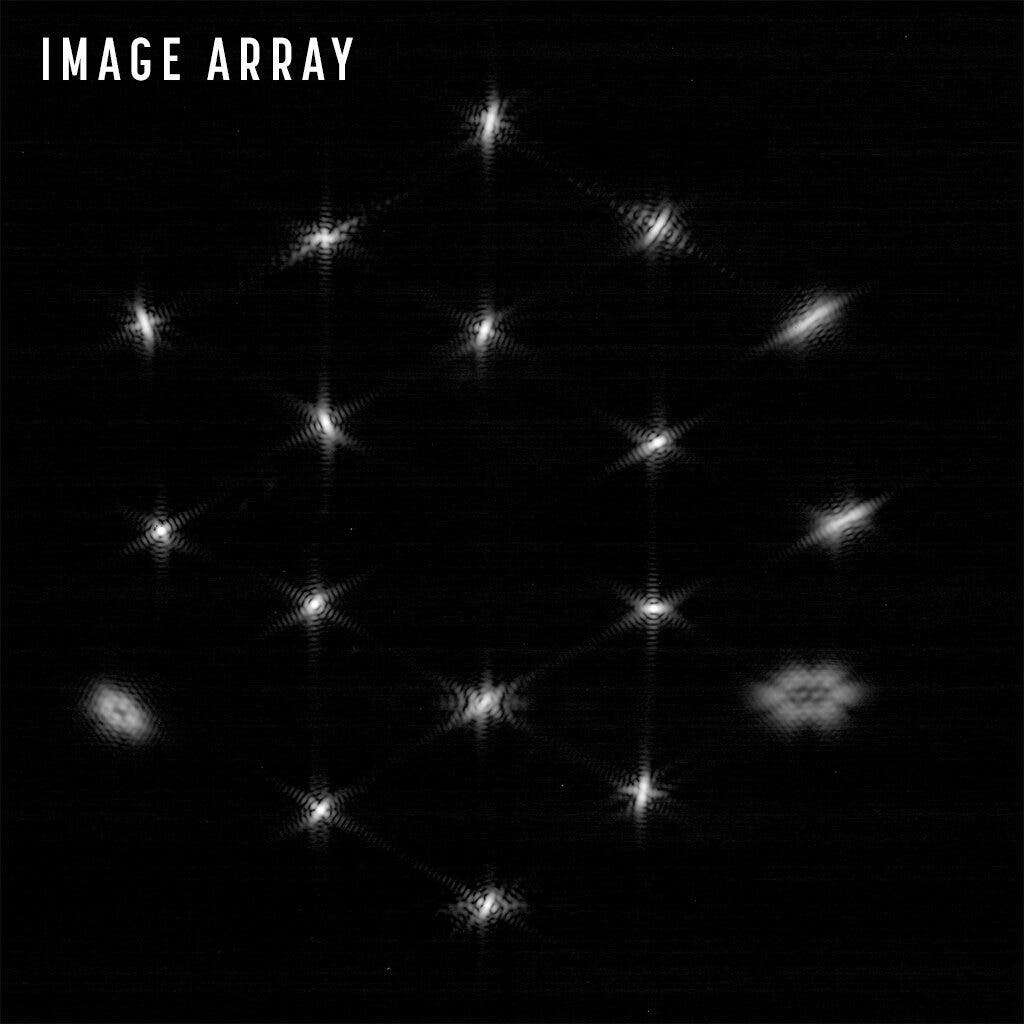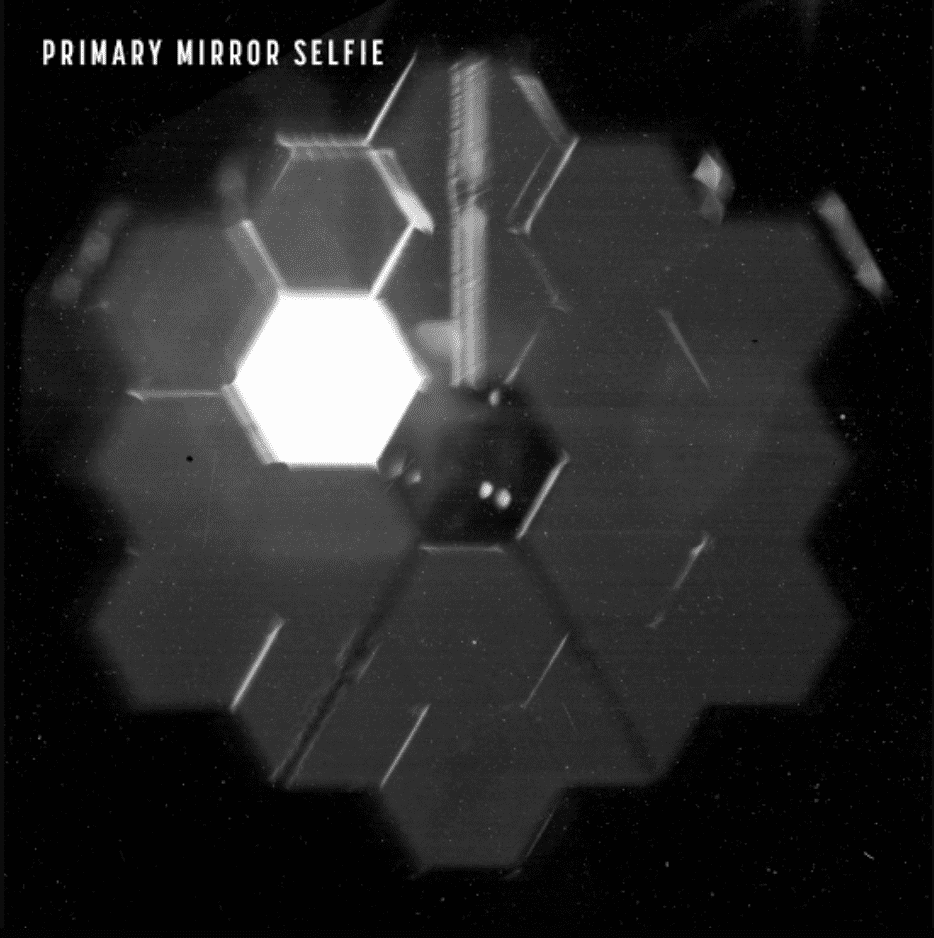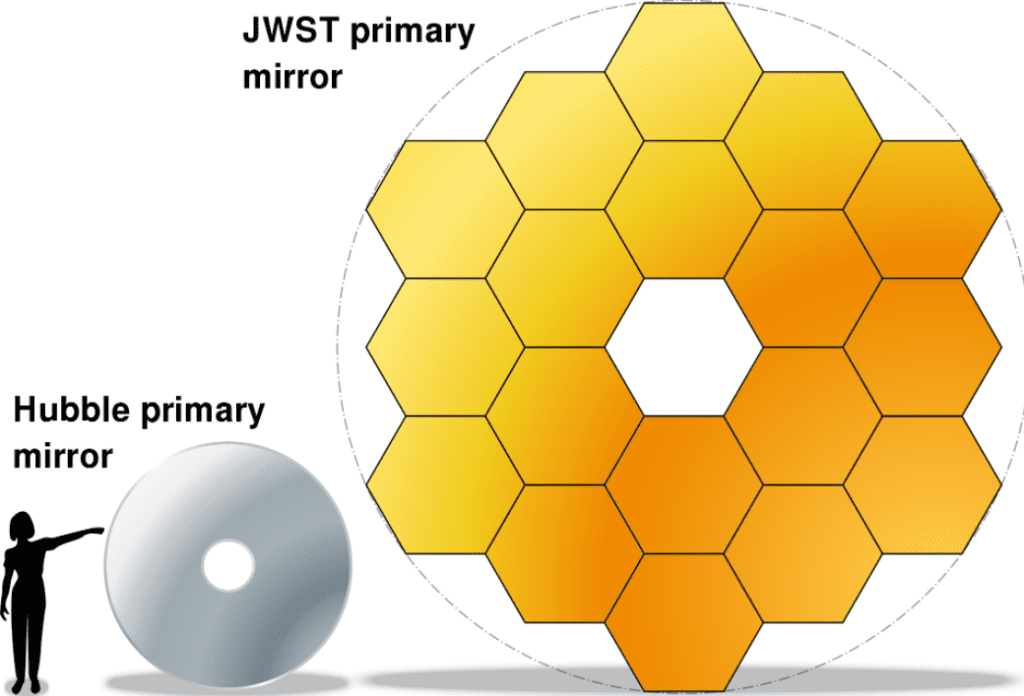The James Webb telescope has completed another milestone of its journey. The so-called “Segment Image Identification” rendered one star 18 times, arranging the unfocused images into a hexagonal shape. Eventually, these 18 images will perfectly align into a single, sharp image — but for now, researchers are excited about this interim result.

The James Webb Space Telescope’s (JWST) primary mirror, the Optical Telescope Element, consists of 18 hexagonal mirror segments made of gold-plated beryllium. Together, these mirrors combine to create a 6.5-meter (21 ft) diameter mirror — almost three times larger than Hubble’s 2.4 m (7.9 ft) mirror. But aligning them perfectly is a delicate process.
As part of this process, engineers are now using each mirror individually to create 18 unfocused copies. We’ve previously seen this happen but now, they’re organized in a shape that resembles JWST’s hexagonal mirrors.
“We steer the segment dots into this array so that they have the same relative locations as the physical mirrors,” said Matthew Lallo, systems scientist and Telescopes Branch manager at the Space Telescope Science Institute. “During global alignment and Image Stacking, this familiar arrangement gives the wavefront team an intuitive and natural way of visualizing changes in the segment spots in the context of the entire primary mirror. We can now actually watch the primary mirror slowly form into its precise, intended shape!”

As Lallo mentioned, the current orientation will make it easier to further arrange and focus the mirrors. This alignment stage began on February 2 and is expected to be completed by the end of the month. After this stage, the “image stacking” stage will begin, with researchers working to bring the 18 images on top of each other into one clear, focused view. It’s expected that the telescope will become fully operational in June 2022.
It’s one of the most ambitious space missions in recent history, an “Apollo moment” that will fundamentally alter our understanding of the universe, NASA says.

James Webb is expected to offer researchers an unprecedented view of the universe, focusing on four main objectives:
- light coming from the very first stars and galaxies that formed after the big bang;
- galaxy formation and evolution;
- star formation and planet formation;
- planetary systems and the origins of life.
We expect the first images and studies to come in from JWST later this year.
Was this helpful?



